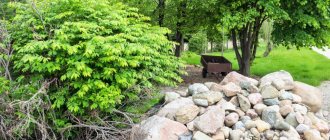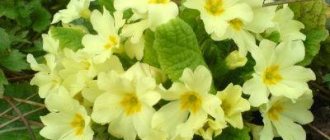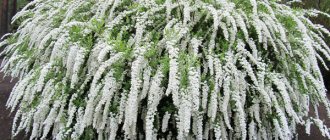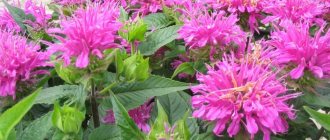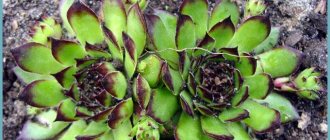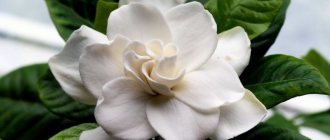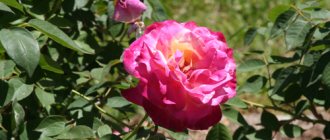The endless steppes, woven from graceful feather grass, are sung by poets and captured on the sensual canvases of great artists, awarded the most enthusiastic epithets and vivid comparisons. Feather grass (Stipa pennata) in the past was considered a typical representative of steppe vegetation. Today it has become an endangered species and has a conservation status in many countries; in Ukraine it is listed in the Red Book. The areas where feather grass used to grow densely are now occupied by agricultural land. The plant has become endangered due to the irrational use of pesticides and fertilizers, the construction of new roads, the collection of awns for decorative purposes, and the overgrowing of areas with low shrubs.
Annual mowing also plays a role, which prevents its reproduction; moreover, the grass is sensitive to trampling. Now in some regions, once famous for the original beauty of steppes densely overgrown with Feather grass, you can admire the plant in its original form only in protected areas.
Description of the plant
Feather grass belongs to the Poaceae family. It reaches a height of up to 1 m and forms loose turf. The plant is recognizable by its characteristic wavy tuft of silvery-green hard leaves up to 30 cm long. In spring they are silky and flat, and as they grow they gradually curl into a thin tube. Their outer side is smooth, the reverse side is rough. The stems are erect, smooth, slightly pubescent under the nodes.
The grass growing in the steppes has a feathery short rhizome and forms dense turf.
The plant is decorated with narrow racemose panicles collected from single-flowered membranous spikelets. Their tops are long and pointed, leathery below.
The plant is wind pollinated and tends to self-pollinate. After flowering, a fruit is formed - a grain. Each grain has a long feathery awn, thanks to which they are carried by the wind at a distance of about 100 m from the mother plant. The viability of the grains is maintained for 4-5 years. Rooted plants will form full-fledged bushes only after three years.
Features of the plant
An interesting phenomenon can be observed after dark in the fields where feather grass grows. As the night cools, dew falls on the leaves, and the lower part of the plant, which was previously curled into a tube, begins to straighten. This presses the feather grass to the surface of the ground. In this case, the panicle with grains simply lies on the ground, clinging to the protrusions with prickly bristles.
When the sun rises, the dew evaporates and the stem takes on its normal shape. The grass straightens out again, but some of the grain remains on the ground, germinating after the next rain.
Where does it grow
Feather grass is a characteristic representative of the forest-steppe and steppe zones of Central Europe, Scandinavia, the Mediterranean, the Caucasus and Central Asia. Refers to mesophytic plants that require sufficient, but not excessive soil moisture.
Occupies small areas in virgin areas. Prefers calcareous and rocky soils, grows in sunny, dry places, mainly in meadow steppes. Feather grass has a short and poorly developed rhizome, so it cannot survive in dense turf among other plants. But if the turf weakens due to drought, Feather grass will certainly take the vacant place in the new area.
Feed value
Feather grass is valuable as a forage plant, but only with certain restrictions. Mostly young grass is used as fodder, which is suitable for sheep and horses. Compared to other forage grasses, it has less value and is not used in the diet of cattle.
In the second half of summer, when Feather grass fades, the leaves and stems become coarser and spikelets form, it poses a serious threat to the health and life of animals. It’s not for nothing that people call it “sheep’s death.” Fresh grass or hay cause mechanical damage to farm animals. Its seeds with sharp awns injure the mucous membrane of the mouth and nose and form fistulas under the tongue. The seeds penetrate the fur and irritate the skin, leading to abscesses.
Decoration of personal plots
A photo of feather grass demonstrates its value as an ornamental crop, which is often used by landscape designers in the design of plots of land or alpine hills. You can plant grass as early as April or May; some people plant in the fall, believing that this way the seedlings will appear faster and be more resistant to damage.
There are two methods of planting - in open ground and with seedlings germinated indoors in pots. In the first case, a hole 3 cm deep is dug at intervals of 20 cm from one another. It is filled with water and seeds are placed, which are simply sprinkled with a layer of soil. You can lightly press the powder deeper with your hands.
When decorating the paths around the house, you can mulch the soil between planting feather grass, namely, sprinkle the soil with expanded clay or small crushed stones.
If you want to grow seedlings, then make a hole in each pot, pour a little water and place 3-4 grains of feather grass (pictured).
There is no need to press the seeds into the ground, just sprinkle 1 cm of soil on top of the crops. You can additionally moisten the soil with a spray bottle. Planting of seedlings begins in March, and after a month you can plant the plants in open ground. For such purposes, choose dry and not too fertile areas of land that will not be flooded after rain, since feather grass is incredibly sensitive to excess moisture. In Soviet times, by watering meadows they got rid of such grass, thereby destroying huge quantities of it in nature.
Caring for crops is incredibly easy, because feather grass is very resistant to diseases and various pests. Even if neighboring plantings are infected with fungi, the feather grass will be the last to take over the disease. But it is not recommended to bring the grass to this state, since fungi release acid into the soil, which increases the acidity of the soil and harms other plants.
The plant in the area near the house looks incredibly beautiful, as evidenced by the photo of feather grass above. And in dry summers, you don’t have to constantly water the area in order to admire the lush vegetation around you.
Use in landscape design
Feather grass with luxurious whitish panicles and no less spectacular leaves is an attractive plant for landscape design. It can become part of a composition, a background plant, and is no less decorative in small groups.
Feather grass prefers open, sunny and dry areas with well-drained, loose, neutral or slightly acidic soil. Does not tolerate waterlogging well. The plant is resistant to cold, so it overwinters without additional shelter.
Feather grass is propagated by seeds or by dividing bushes, which is usually done in the spring.
Using feather grass
This herbaceous plant is practically not used as fodder, and if it is used, it is before flowering. Sharp ears injure the skin and tongue of animals, leading to the formation of ulcers and fistulas, which are difficult to treat. Feather grass disease often ends in the death of the animal.
Feather grass is considered a weed and does not contribute to the formation of black soil. But since it grows only on infertile soils, it does not cause much harm to agriculture. The herbaceous plant covers fertile land only after several years of drought or after last year's dry grass is set on fire.
However, man has found a use for feather grass in landscape design. Without having bright flowers or leaves, the grass forms a beautiful background for ornamental plants planted nearby. Whenever the wind blows, the feather grass sways beautifully in waves, captivating the eye.
A fashionable trend in landscape design – the creation of a “natural garden” – cannot do without feather grass. It is combined with natural inhabitants of meadows - foxtail, fescue, miscanthus, poppies, daisies, decorative onions, sage, heather, etc.
The plant looks no less decorative with roses of bright colors, as well as along the path leading to the pond.
Beneficial features
Feather feather grass is not used in official medicine. Thanks to the biologically active substances contained in its composition, it is considered a medicinal plant and is used in folk medicine. The leaves are collected during the flowering period of the plant, and the roots - in the fall and are used to treat the thyroid gland in the form of a milk-based decoction and for paralysis due to stroke.
However, cyanogenic compounds, including trigloquinine, present in its chemical composition, have healing properties in small doses, but are poisonous in high concentrations and if used incorrectly.
People allergic to cereals should be careful when coming into contact with the plant, especially during the flowering period.
Feather grass - types and varieties
Feather grass is a genus of about 300 large perennial hermaphroditic grasses, which are collectively known as: feather grass, needle grass and spear grass. They belong to the Poa family and the feather grass species.
Many species are important agricultural forage crops. Several species are used as ornamental plants such as: Stipa brachytricha, S. arundinacea, S. splendens, S. calamagrostis, S. gigantea and S. pulchra. There is a species, esparto grass (Stipa tenacissima), which is actively used for crafts and is widely used in paper production.
As already mentioned, about 80 plant species grow in Russia. Some of them are most notable.
feather grass
The long, hairless leaves of this feather grass species are equipped with tassels at the end. The plant reaches 20-40 cm in length. The flowering period occurs at the end of spring - beginning of summer.
Feather grass
The leaves are grayish-green, they are somewhat wider, rolled into a tube along the stem. The length of the hairy awn is approximately 16 cm. It grows up to a meter in height. It also blooms in late spring - early summer.
Far Eastern feather grass
The plant is found in Japan and China. In Russia, it can be found in the Dolny East and in the eastern part of Siberia. Unlike other types of feather grass, which rarely grow more than a meter, this species can reach 1.8 m and have a spine of about half a meter. The leaves are glossy, thin and hard, about 3 cm wide.
The most beautiful feather grass
This type of feather grass grows not only in steppe regions. It thrives on rocky soils and can grow quite high in the Mountains. It is found in European and Asian countries, in the Caucasus and Western Siberian regions. The plant is low, about 0.7 m, the foliage is dark green. Quite often it is grown in garden plots for decorative purposes.
Growing in the steppes, the beautiful feather grass creates a huge silk canvas, shining in the wind with golden and silvery waves. It seems that the steppe is swaying under the covered blanket, shimmering under the pressure of the wind.
Feather grass beneficial properties
Feather grass contains a fairly large number of biologically active compounds, so if used incorrectly, serious poisoning can occur. However, the same substances allow it to be used for medicinal purposes. All parts of the plant are used as raw materials.
If the rules of preparation and use are followed, preparations prepared from feather grass can help treat many diseases.
The best time to harvest medicinal raw materials is May and early June. Most species of wild feather grass bloom at this time. The ground part is cut off and hung in a draft, providing reliable protection from precipitation and exposure to direct sunlight.
It is not recommended to make bundles intended for drying too thick. The plant must be well ventilated to avoid mold. Moldy raw materials are considered spoiled and cannot be further processed or used.
Feather grass foliage can be used to prepare a medicinal decoction that treats thyroid disease. This decoction will also be a good sedative and pain reliever. The stems, as well as the underground part of the plant, are used in folk medicine for paralysis.
It is not recommended to use preparations based on feather grass if you are allergic to any plants, since this cereal is a pronounced allergen. It is also contraindicated for asthmatics. In addition, you should strictly adhere to the dosage and not exceed the course of treatment. The plant is poisonous, and if handled carelessly, unpleasant consequences are inevitable.

